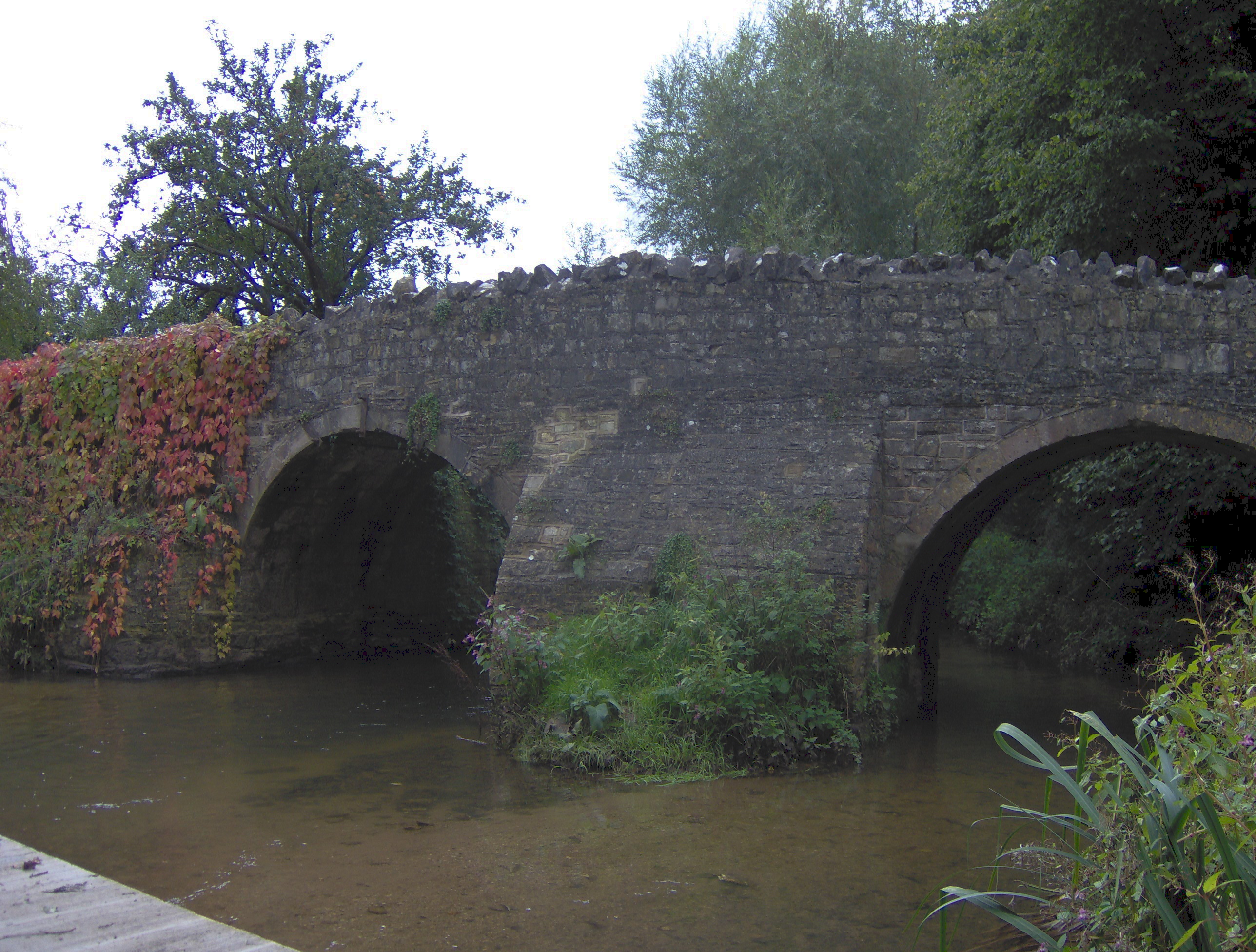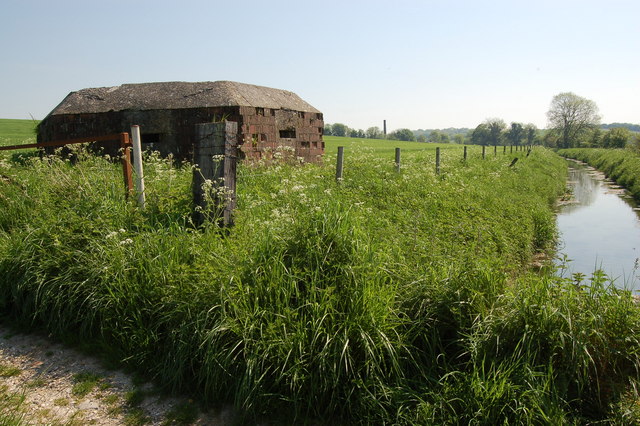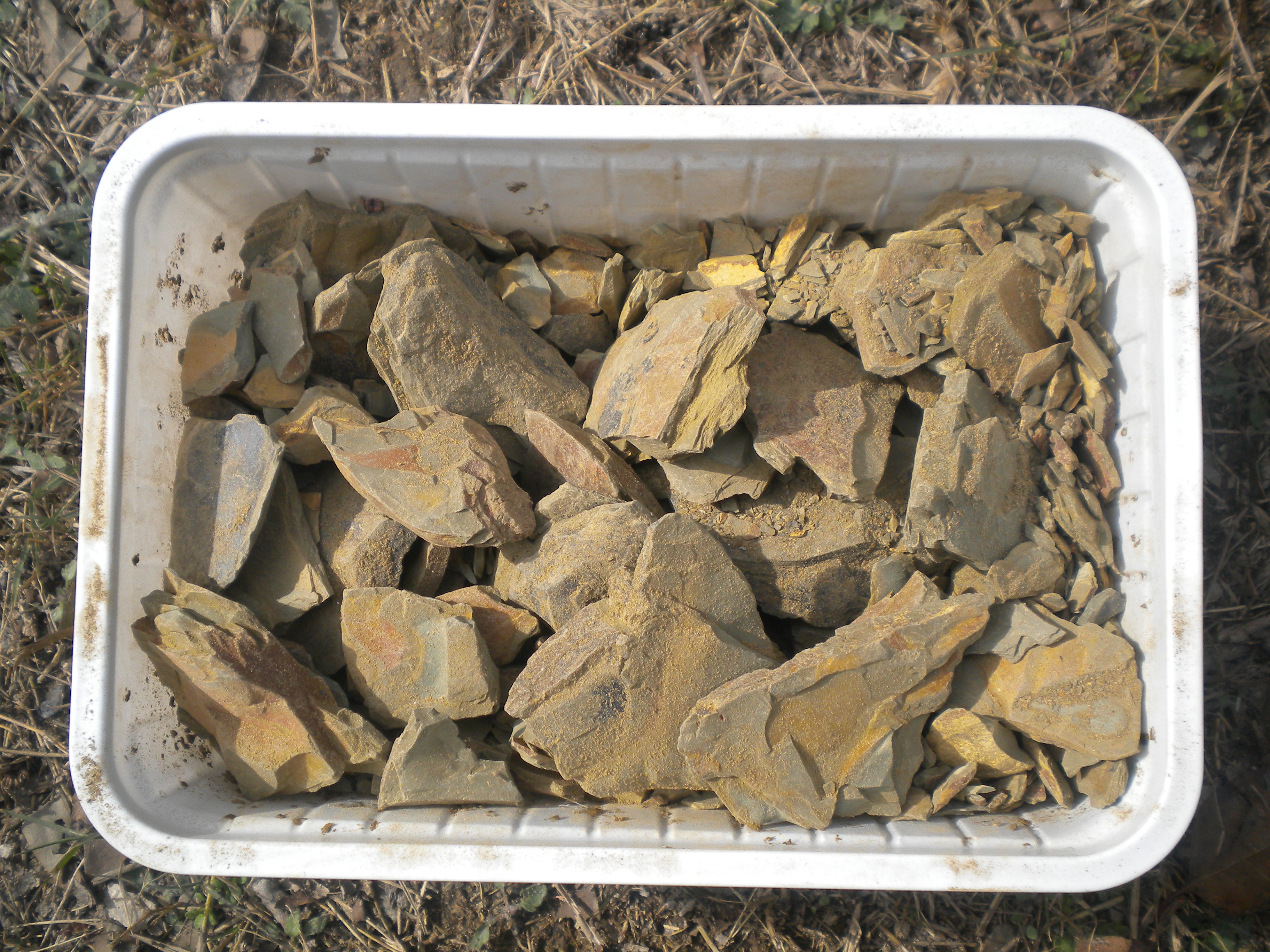|
Wellow, Somerset
Wellow is a village and Civil parishes in England, civil parish in Somerset, England, about south of Bath, Somerset, Bath. The parish, which includes the hamlet (place), hamlets of Twinhoe, White Ox Mead, Baggridge and part of Midford has a population of 529. The village itself falls within the southernmost boundary of the Cotswolds, Cotswolds Area of Outstanding Natural Beauty and is recognised as having special architectural and historic interest, which led to it being designated as a Conservation Area in 1983. History There is a low water crossing (Irish Bridge) and late Middle Ages, mediaeval packhorse bridge over Wellow Brook, Somerset, Wellow Brook. A little further west is the Neolithic chambered tomb known as Stoney Littleton Long Barrow. The Long Barrow, which is also known as Bath Tumulus and the Wellow Tumulus, is a Neolithic chambered tomb with multiple burial chambers. The barrow is about in length and wide at the south-east end, it stands nearly high. Interna ... [...More Info...] [...Related Items...] OR: [Wikipedia] [Google] [Baidu] |
Bath And North East Somerset
Bath and North East Somerset (B&NES) is a unitary authority district in England. Bath and North East Somerset Council was created on 1 April 1996 following the abolition of the county of Avon. It is part of the ceremonial county of Somerset. The unitary authority provides a single tier of local government with responsibility for almost all local government functions within the district, including local planning and building control, local roads, council housing, environmental health, markets and fairs, refuse collection, recycling, cemeteries, crematoria, leisure services, parks, and tourism. It is also responsible for education, social services, libraries, main roads, public transport, trading standards, waste disposal and strategic planning, although fire, police and ambulance services are provided jointly with other authorities through the Avon Fire and Rescue Service, Avon and Somerset Constabulary and the South Western Ambulance Service. Its administrative headquarters ... [...More Info...] [...Related Items...] OR: [Wikipedia] [Google] [Baidu] |
Ammonite
Ammonoids are a group of extinct marine mollusc animals in the subclass Ammonoidea of the class Cephalopoda. These molluscs, commonly referred to as ammonites, are more closely related to living coleoids (i.e., octopuses, squid and cuttlefish) than they are to shelled nautiloids such as the living ''Nautilus'' species. The earliest ammonites appeared during the Devonian, with the last species vanishing during the Cretaceous–Paleogene extinction event. Ammonites are excellent index fossils, and linking the rock layer in which a particular species or genus is found to specific geologic time periods is often possible. Their fossil shells usually take the form of planispirals, although some helically spiraled and nonspiraled forms (known as heteromorphs) have been found. The name "ammonite", from which the scientific term is derived, was inspired by the spiral shape of their fossilized shells, which somewhat resemble tightly coiled rams' horns. Pliny the Elder ( 79 AD near Pomp ... [...More Info...] [...Related Items...] OR: [Wikipedia] [Google] [Baidu] |
Wellow, Somerset Railway Station
Wellow railway station was a station on the Somerset and Dorset Joint Railway at Wellow in the county of Somerset in England. Opened on 20 July 1874, the station consisted of two platforms, a goods yard and sidings, controlled from an 18 lever signal box. The station closed to goods in 1963: passenger services were withdrawn when the SDJR closed on 7 March 1966. The site today The station building was converted into a house by the artist Peter Blake and his then wife Jann Haworth, in the mid-1970s, during their Brotherhood of Ruralists The Brotherhood of Ruralists is a British art group founded in 1975 in Wellow, Somerset, to paint nature. Their work is figurative with a strong adherence to 'traditional' skills. Painting in oil and watercolour predominate, with mixed media asse ... period. The signalbox at the northern end of the down platform has also been converted for residential use. The station's canopy is still visible from nearby green space where the rail track ra ... [...More Info...] [...Related Items...] OR: [Wikipedia] [Google] [Baidu] |
British Hardened Field Defences Of World War II
British hardened field defences of World War II were small fortified structures constructed as a part of British anti-invasion preparations. They were popularly known as '' pillboxes'', a reference to their shape. Design and development In May 1940, the directorate of Fortifications and Works (FW3) was set up at the War Office under the direction of Major-General G. B. O. Taylor. Its purpose was to provide a number of basic but effective pillbox designs that could be constructed by soldiers and local labour at appropriate defensive locations. In the following June and July, FW3 issued six basic designs for rifle and light machine gun, designated Type 22 to Type 27. In addition, there were designs for gun emplacements suitable for either the Ordnance QF 2 pounder or the Hotchkiss 6pdr gun (designated Type 28) and a design for a hardened medium machine gun emplacement. There were also designs for pillbox-like structures for various purposes including light anti-aircraft positio ... [...More Info...] [...Related Items...] OR: [Wikipedia] [Google] [Baidu] |
GHQ Line
The GHQ Line (General Headquarters Line) was a defence line built in the United Kingdom during World War II to contain an expected German invasion. The British Army had abandoned most of its equipment in France after the Dunkirk evacuation. It was therefore decided to build a static system of defensive lines around Britain, designed to compartmentalise the country and delay the Germans long enough for more mobile forces to counter-attack. Over 50 defensive lines were constructed across the country. After the coastal defences, the GHQ Line was the longest and most important, designed to protect London and the industrial heart of Britain, and was considered to be the last chance of defence. The "green" section of the GHQ Line ran from the northern end of the Taunton Stop Line near Highbridge in Somerset, along the River Brue, across the Mendips from Wells and following the railway from Masbury into the Wellow valley. This joined the "blue" line which followed the Kennet and Avo ... [...More Info...] [...Related Items...] OR: [Wikipedia] [Google] [Baidu] |
World War II
World War II or the Second World War, often abbreviated as WWII or WW2, was a world war that lasted from 1939 to 1945. It involved the vast majority of the world's countries—including all of the great powers—forming two opposing military alliances: the Allies and the Axis powers. World War II was a total war that directly involved more than 100 million personnel from more than 30 countries. The major participants in the war threw their entire economic, industrial, and scientific capabilities behind the war effort, blurring the distinction between civilian and military resources. Aircraft played a major role in the conflict, enabling the strategic bombing of population centres and deploying the only two nuclear weapons ever used in war. World War II was by far the deadliest conflict in human history; it resulted in 70 to 85 million fatalities, mostly among civilians. Tens of millions died due to genocides (including the Holocaust), starvation, ma ... [...More Info...] [...Related Items...] OR: [Wikipedia] [Google] [Baidu] |
Fuller's Earth
Fuller's earth is any clay material that has the capability to decolorize oil or other liquids without the use of harsh chemical treatment. Fuller's earth typically consists of palygorskite (attapulgite) or bentonite. Modern uses of fuller's earth include as absorbents for oil, grease, and animal waste (cat litter) and as a carrier for pesticides and fertilizers. Minor uses include filtering, clarifying, and decolorizing; active and inactive ingredient in beauty products; and as a filler in paint, plaster, adhesives, and pharmaceuticals. It also has a number of uses in the film industry and on stage. Etymology The English name reflects the historic use of the material for fulling (cleaning and shrinking) wool, by textile workers known as ''fullers''. In past centuries, fullers kneaded fuller's earth and water into woollen cloth to absorb lanolin, oils, and other greasy impurities as part of the cloth finishing process. The original spelling was without an apostrophe, but th ... [...More Info...] [...Related Items...] OR: [Wikipedia] [Google] [Baidu] |
Hinton Charterhouse
__NOTOC__ Hinton may refer to: Places Australia *Hinton, New South Wales Canada *Hinton, Alberta ** Hinton/Entrance Airport ** Hinton/Jasper-Hinton Airport ** Hinton CN railway station England * Hinton, Dorset, a civil parish **Hinton Martell, Dorset ** Hinton Parva, Dorset *Hinton, South Gloucestershire, Gloucestershire *Hinton, Stroud, Gloucestershire, a village near Berkeley * Hinton, Hampshire * Hinton, Herefordshire *Hinton, Northamptonshire * Hinton, Shropshire * Hinton, Somerset * Hinton, Suffolk *Hinton Admiral, Hampshire ** Hinton Admiral railway station *Hinton Ampner, Hampshire *Hinton Blewett, Somerset *Hinton Charterhouse, Somerset *Hinton Daubney, Hampshire *Hinton Parva, Wiltshire, also known as Little Hinton *Hinton St George, Somerset *Hinton St Mary, Dorset *Hinton Waldrist, Oxfordshire *Hinton-in-the-Hedges, Northamptonshire *Hinton on the Green, Worcestershire *Broad Hinton, Wiltshire *Cherry Hinton, Cambridgeshire *Great Hinton, Wiltshire *Tarrant Hinton, Dors ... [...More Info...] [...Related Items...] OR: [Wikipedia] [Google] [Baidu] |
Bristol
Bristol () is a city, ceremonial county and unitary authority in England. Situated on the River Avon, it is bordered by the ceremonial counties of Gloucestershire to the north and Somerset to the south. Bristol is the most populous city in South West England. The wider Bristol Built-up Area is the eleventh most populous urban area in the United Kingdom. Iron Age hillforts and Roman villas were built near the confluence of the rivers Frome and Avon. Around the beginning of the 11th century, the settlement was known as (Old English: 'the place at the bridge'). Bristol received a royal charter in 1155 and was historically divided between Gloucestershire and Somerset until 1373 when it became a county corporate. From the 13th to the 18th century, Bristol was among the top three English cities, after London, in tax receipts. A major port, Bristol was a starting place for early voyages of exploration to the New World. On a ship out of Bristol in 1497, John Cabot, a Venetia ... [...More Info...] [...Related Items...] OR: [Wikipedia] [Google] [Baidu] |
Norton St
Norton may refer to: Places Norton, meaning 'north settlement' in Old English, is a common place name. Places named Norton include: Canada *Rural Municipality of Norton No. 69, Saskatchewan *Norton Parish, New Brunswick **Norton, New Brunswick, a village United Kingdom England *Norton, Runcorn, Cheshire, a district * Norton, South Hams, a location in Devon * Norton, Torridge, a location in Devon *Norton, County Durham, an area of Stockton-on-Tees * Norton, East Sussex, a location *Norton, Gloucestershire, a civil parish * Norton, Hampshire, a hamlet near Sutton Scotney *Norton, Herefordshire, a civil parish near Bromyard *Norton, Hertfordshire, a village *Norton, Isle of Wight, a location *Norton, Kent *Norton, Northamptonshire, a village *Norton, Nottinghamshire, a village * Norton, Culmington, a location in Shropshire * Norton, Stockton, Shropshire, a location in Shropshire * Norton, Wroxeter and Uppington, a location in Shropshire * Norton, Somerset, a location *Norton, Doncaste ... [...More Info...] [...Related Items...] OR: [Wikipedia] [Google] [Baidu] |
Monmouth Rebellion
The Monmouth Rebellion, also known as the Pitchfork Rebellion, the Revolt of the West or the West Country rebellion, was an attempt to depose James II, who in February 1685 succeeded his brother Charles II as king of England, Scotland and Ireland. A group of dissident Protestants led by James Scott, 1st Duke of Monmouth, eldest illegitimate son of Charles II, opposed James largely due to his Catholicism. The failure of Parliamentary efforts to exclude James from the succession in 1681 resulted in the 1683 Rye House Plot to assassinate Charles II and James; although Monmouth was then in exile in the Dutch Republic, he was identified as a co-conspirator. His rebellion was coordinated with a simultaneous rising in Scotland, led by Archibald Campbell, 9th Earl of Argyll. On 11 June 1685, Monmouth landed at Lyme Regis in South West England where he had widespread popular support, planning to take control of the area and march on London. In the next few weeks, his growing army ... [...More Info...] [...Related Items...] OR: [Wikipedia] [Google] [Baidu] |





